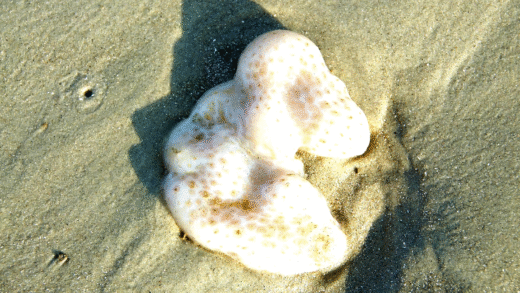Naked mole rats are unique rodents known for their underground colonies and social structures. They have specialized roles within their colonies, including a queen, workers, and soldiers. Their social organization is similar to that of bees, showcasing cooperative breeding and labor division. Naked mole rats have adapted to their underground lifestyle with features like hairlessness and low oxygen tolerance. Ecologically, they aerate soil and serve as prey, but can also be seen as pests in agriculture.
Naked Mole Rat Overview: What Are They?
The naked mole rat is a fascinating creature that stands out in the animal kingdom for its unique characteristics. These small rodents, native to East Africa, are known for their hairless bodies and remarkable social structures. Naked mole rats live in underground colonies, which can consist of up to 300 individuals. They are not your typical rodents; their adaptations allow them to thrive in harsh environments where few other species can survive.
Habitat: Where Do Naked Mole Rats Live?
Naked mole rats inhabit the arid regions of East Africa, primarily in countries like Ethiopia, Kenya, and Somalia. They prefer areas with sandy soil, which makes it easier for them to dig extensive tunnel systems. Their underground homes can stretch for miles and feature multiple chambers for nesting, storing food, and even specific areas for waste. The temperature and humidity within these tunnels provide a stable environment, crucial for their survival.
Unique Features: What Makes Naked Mole Rats Stand Out?
Naked mole rats have several distinctive features that set them apart from other mammals. Firstly, their lack of fur is an adaptation to their underground lifestyle, helping them navigate tight spaces without getting caught. Additionally, these rodents possess large incisors that protrude from their mouths, allowing them to dig through tough soil and consume tubers and roots. Another fascinating aspect is their resistance to cancer, making them a subject of scientific research. Their social behavior is also unique, as they exhibit a hive-like structure with a queen, workers, and soldiers, similar to bees.
Underground Living: How Do Naked Mole Rats Thrive Below Ground?
Naked mole rats are masters of underground living. Their adaptations allow them to thrive in the dark, humid tunnels they dig. Here are some key features that help them survive:
- Specialized Teeth: Their large incisors help them dig through tough soil and eat roots and tubers.
- Low Oxygen Needs: Naked mole rats can tolerate low oxygen levels, which is crucial in their crowded tunnels.
- Temperature Regulation: They maintain their body temperature by huddling together, which is vital in the fluctuating underground environment.
- Social Cooperation: Working together, they can excavate extensive tunnel systems, maximizing their living space.
This underground lifestyle not only protects them from predators but also allows them to access food sources that are unavailable to many other animals. Their colonies can stretch for miles, demonstrating their capability to adapt and thrive in a challenging habitat.
Hive Behavior: What Does It Mean?
The hive behavior of naked mole rats is one of their most fascinating traits. This social structure resembles that of bees, with a clear division of labor within the colony. Key aspects of their hive behavior include:
- Queen Role: A single queen is responsible for reproduction, while other females act as workers.
- Worker Duties: Workers maintain the tunnels, care for the young, and forage for food.
- Soldier Function: Some members serve as soldiers, defending the colony from threats.
- Communication: They use vocalizations and touch to coordinate activities and share information.
This social system enhances their survival, as collective efforts ensure the colony can adapt to changing conditions and threats. The naked mole rat’s hive behavior exemplifies how social structures can contribute to the success of a species.
Lifespan: How Long Do Naked Mole Rats Live?
Naked mole rats are remarkable for their lifespan, living significantly longer than most rodents. While typical rodents may live a few years, naked mole rats can live up to 30 years. Factors contributing to their longevity include:
- Resistance to Disease: Their unique biology makes them less susceptible to certain diseases, including cancer.
- Low Metabolic Rate: This helps them conserve energy and resources, contributing to a longer life.
- Social Structure: Living in a colony provides protection and support, enhancing their overall well-being.
The long lifespan of naked mole rats not only fascinates scientists but also holds potential insights into aging and health in other species, including humans. Their unique adaptations and social structure continue to be a subject of research and intrigue.
Roles in the Colony: Who Does What?
Naked mole rats display a complex social structure within their colonies, with distinct roles that ensure their survival and efficiency. Each naked mole rat has a specific job that contributes to the colony’s overall well-being. The main roles include:
- Queen: The queen is the sole breeding female, responsible for producing offspring. She can have several litters per year, ensuring a steady population growth.
- Workers: These are the females that do not breed. Their tasks involve maintaining the tunnels, foraging for food, and caring for the queen’s young.
- Soldiers: Male and female soldiers protect the colony from predators. They are larger and stronger than the workers and are crucial for the colony’s defense.
This division of labor enhances the efficiency of naked mole rat colonies. By working together, they can build and maintain extensive underground systems, ensuring that all members have access to food and protection.
Social Structure: How Do They Compare to Other Mammals?
The social structure of naked mole rats is unique among mammals, resembling that of eusocial insects like bees and ants. Unlike most mammals that are solitary or form loose family units, naked mole rats live in highly organized colonies. Key characteristics include:
- Cooperative Breeding: Only the queen breeds, while other females help raise the young. This contrasts with many mammals where multiple individuals breed.
- Division of Labor: Clear roles within the colony enhance productivity and survival, unlike many mammal species that do not have such structured roles.
- Communication: Naked mole rats communicate through vocalizations and physical interactions, much like social insects, which helps coordinate activities.
This highly structured social system provides benefits such as increased survival rates and resource sharing, showcasing an impressive adaptation to their environment.
Adaptations: What Helps Them Survive Underground?
Naked mole rats possess several adaptations that allow them to thrive in their underground habitats. These adaptations are essential for their survival in a challenging environment. Key features include:
- Hairlessness: Their lack of fur reduces resistance when moving through tight tunnels and helps with temperature regulation.
- Low Oxygen Tolerance: Naked mole rats can survive in low-oxygen environments, which is crucial for living in crowded burrows.
- Specialized Teeth: Their large incisors are continuously growing, allowing them to dig and eat tubers, which are a primary food source.
- Social Behavior: Their cooperative living style enhances their ability to modify their environment, leading to the creation of extensive tunnel systems.
These adaptations not only help naked mole rats survive but also thrive in their unique ecological niche, demonstrating their remarkable evolutionary success.
Ecological Impact: Are They Pests or Beneficial?
Naked mole rats play a dual role in their ecosystems, being both beneficial and potentially problematic. Their ecological impact can be summarized as follows:
- Soil Aeration: Their extensive tunneling improves soil aeration and drainage, benefiting plant growth in their habitats.
- Prey for Predators: Naked mole rats serve as a food source for various predators, contributing to the food web in their ecosystems.
- Potential Pest Status: In agricultural areas, they can be seen as pests due to their burrowing habits and consumption of crops, leading to conflicts with farmers.
Understanding the ecological impact of naked mole rats helps highlight their importance in their habitats, balancing their roles as both beneficial organisms and potential pests.





Comments are closed.